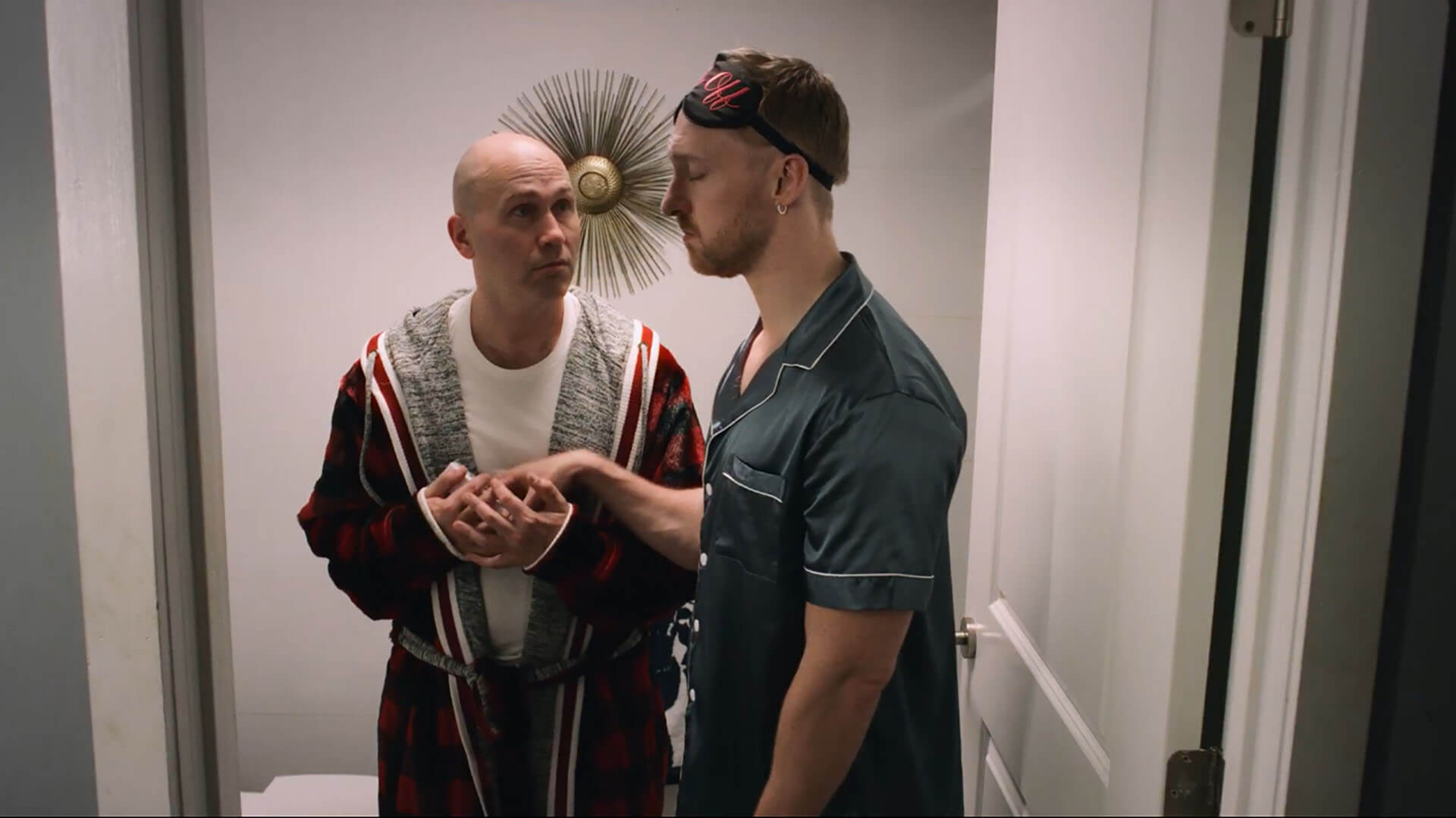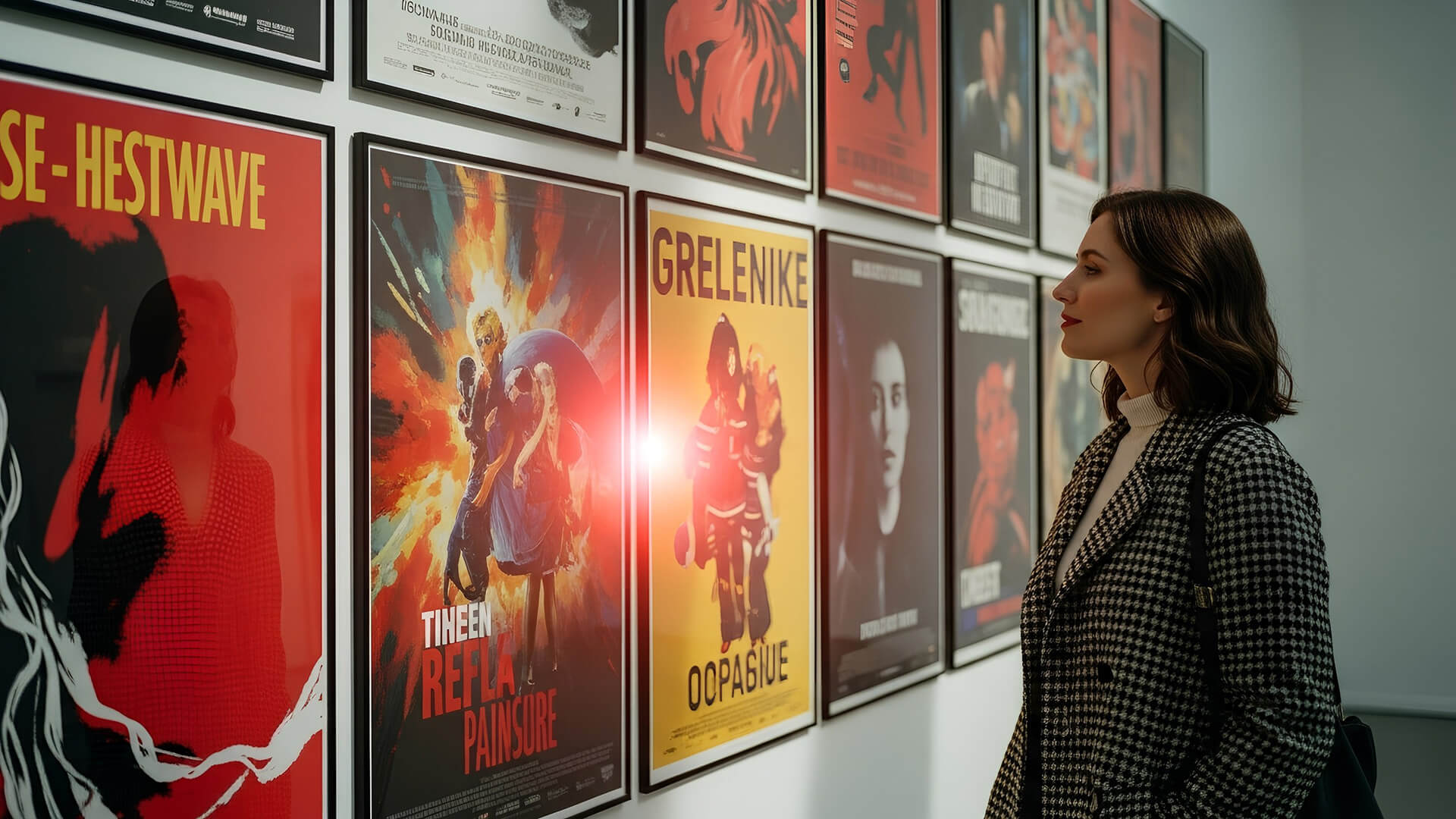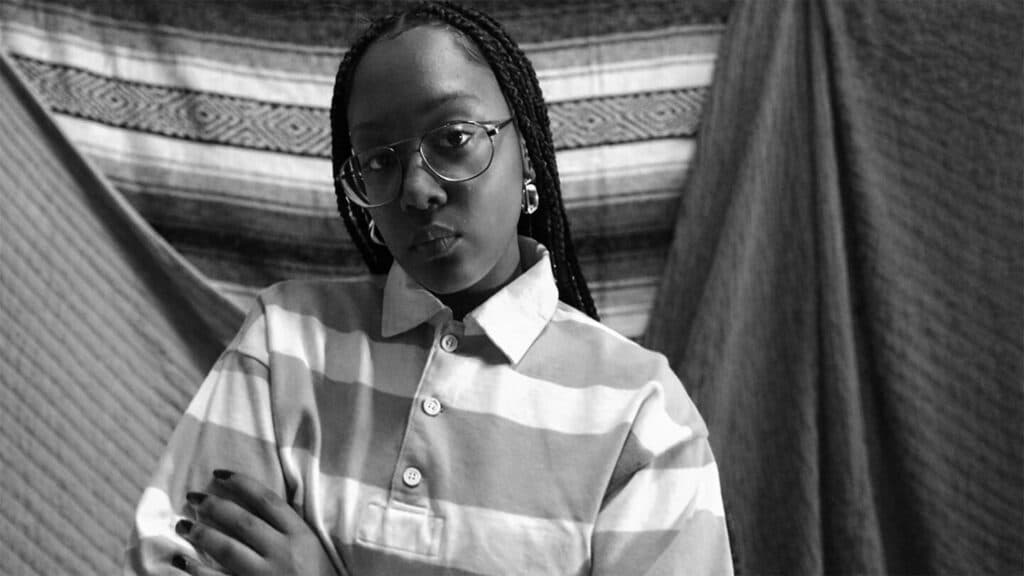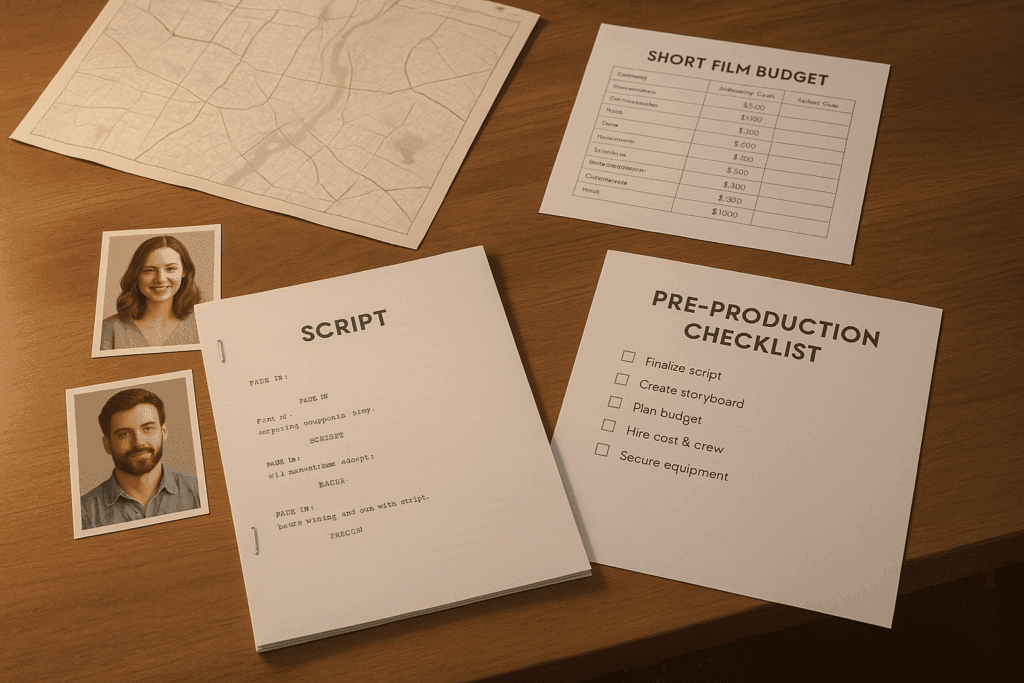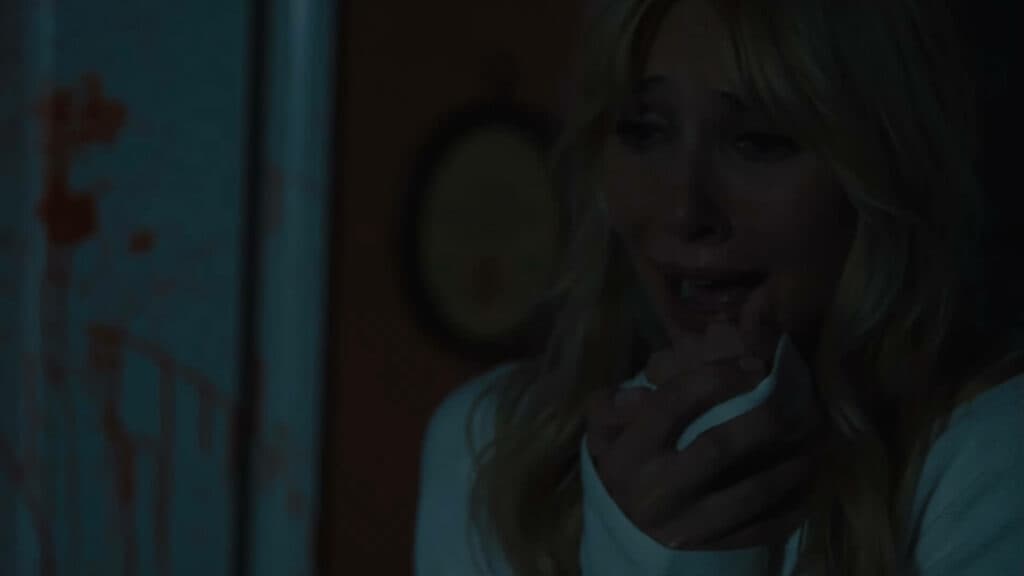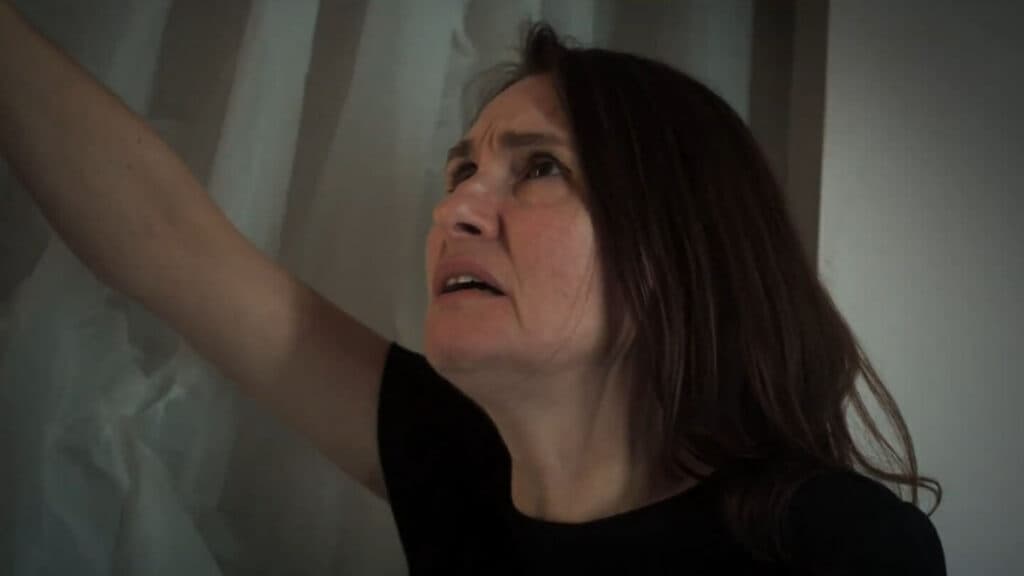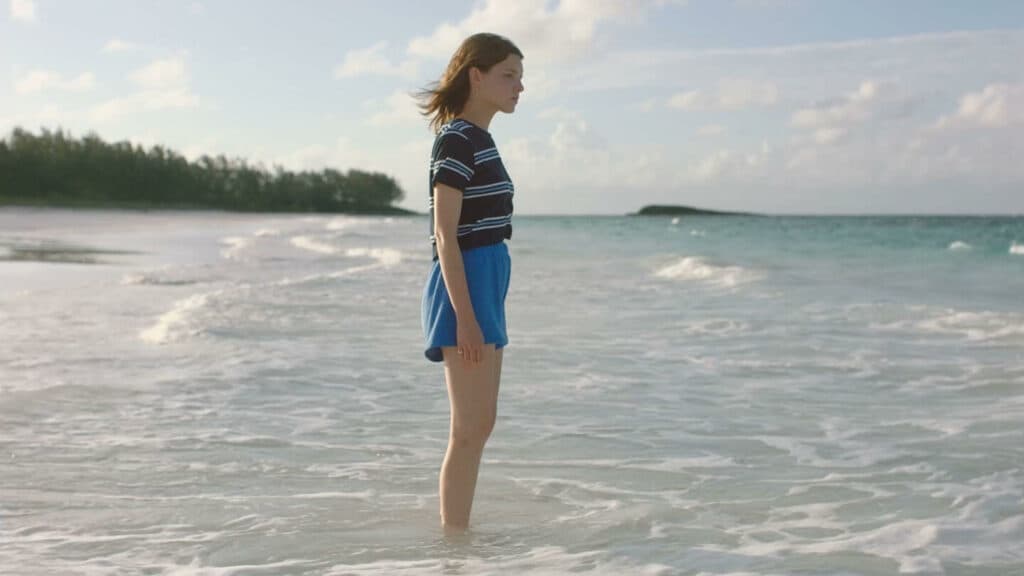Short films and feature films differ in length, storytelling, production costs, and distribution. A short film runs 40 minutes or less, focusing on concise narratives with minimal characters and budgets averaging $3,000–$14,000. Feature films exceed 40 minutes, offering deeper character development, complex plots, and larger budgets ranging from $750,000 for independent productions to $100+ million for studio-backed projects.
Key points to consider when deciding between the two formats:
- Storytelling: Short films focus on single themes or moments, while feature films allow for layered narratives and character arcs.
- Budget: Short films are cost-effective and manageable for beginners, while feature films require significant financial and logistical resources.
- Production Time: Short films have shorter timelines, making them ideal for quick projects, whereas feature films demand extended schedules.
- Distribution: Short films rely on festivals and online platforms, while feature films benefit from theatrical releases and major streaming services.
Quick Comparison
| Aspect | Short Film | Feature Film |
|---|---|---|
| Length | Up to 40 minutes | Over 40 minutes |
| Story Structure | Single theme, focused plot | Complex plots, multiple arcs |
| Budget | $3,000–$14,000 (avg.) | $750,000–$100M+ (avg.) |
| Production Time | Shorter timelines | Longer schedules |
| Distribution | Festivals, online platforms | Theaters, streaming services |
Short films are ideal for beginners or testing ideas, while feature films are better for reaching larger audiences and telling expansive stories. Choose based on your resources, goals, and the scope of your story.
Short film vs Feature Film | Take Okay
Story Structure and Length
For independent filmmakers, understanding the mechanics of storytelling is crucial when deciding between short films and feature-length projects. The difference in runtime – short scripts typically spanning 2–40 pages and feature scripts extending from 80 to 130 pages – directly influences how stories are told. This disparity shapes every element of the narrative, from pacing to plot structure.
Plot Development and Character Focus
Short films offer a quick snapshot of a character’s life, while feature films provide the space to explore significant character growth and transformation. In short films, time constraints often limit character development, with characters sometimes embodying archetypes or representing specific ideas rather than undergoing deep, personal journeys. These films usually center on a single major conflict, creating a tightly focused narrative.
"Short scripts can only give us a glimpse into a character’s life – really just a brief moment – where features can allow us to really go through something with them."
- Ken Miyamoto, Screenwriter
In contrast, feature films delve into multiple storylines and character arcs, weaving together primary and secondary narratives. These longer formats allow for rich, layered storytelling, where motivations and transformations unfold over time. While short films rely on brief but impactful moments to convey character depth, feature films have the luxury of exploring complex trajectories.
Pacing and Story Structure
The pacing of a story is as critical as its content, and the two formats demand different approaches. Short films require a quick setup and resolution, leaving little time for a gradual buildup of tension. The narrative must move swiftly toward a clear theme or message. Often, short films use a condensed version of the classic three-act structure, sometimes ending abruptly at or immediately after the climax, with minimal falling action or resolution.
"A short script can’t just be a feature condensed into smaller perimeters – the same way a feature script can’t just be a lengthened short. They are two different beasts to tackle – complete with different structures, different pacing, and different end results."
- Ken Miyamoto, Screenwriter
Feature films, on the other hand, have the time to master pacing through twists, turns, and gradual development. They typically follow a three-act structure, with Act 1 taking up about 25% of the runtime, Act 2 around 50%, and Act 3 the remaining 25%. Some modern narratives tweak this formula to allocate 20%, 60%, and 20% to the three acts, respectively. This flexibility allows for deeper character development, intertwined plots, and a more nuanced exploration of themes.
For short films, every element must serve the story’s core purpose. Filmmakers are encouraged to "enter late and leave early" in each scene, minimize the number of characters and locations, and ensure that every line of dialogue is essential. As the Raindance Film Festival aptly states, "less is more". This approach often involves cutting any scenes that don’t contribute meaningfully to the narrative, creating a lean and focused storytelling style.

Budget and Production Costs
Short and feature films operate within vastly different budget ranges, shaping their production environments and creative decisions in unique ways.
Typical Budget Ranges
Short films generally require significantly smaller budgets compared to feature films. On average, a short film budget hovers around $14,000, though the median figure is closer to $3,000. The disparity stems from factors like genre, with animation standing out as the most expensive category, averaging nearly $40,000. In contrast, documentaries and fiction shorts cost roughly one-third of that amount. Experimental films, known for their minimalistic approach, are often the least costly to produce.
To put this into perspective, production costs for short films typically range between $700 and $1,500 per minute. This means creating a 10-minute short film can require a budget between $7,000 and $15,000.
Feature films, however, operate on an entirely different scale. In 2019, the average production budget for a Hollywood film was $65 million, while independent films averaged around $750,000. Even at the low end, "ultra–low budget" features often start where the most expensive short films leave off. Here’s a breakdown of feature film budget categories:
- Ultra–low budget features (under $5 million): These films often have limited scope and rely on creative problem-solving.
- Low-budget features ($5–20 million): These allow for longer shooting schedules, larger crews, and occasionally well-known actors.
- Mid-budget features ($20–100 million): These productions can attract major stars and explore a wide range of genres.
- High-budget features (over $100 million): With full studio backing, these films have access to nearly unlimited resources.
These budget tiers directly influence the scale of production, from the size of the crew to the quality of equipment used.
Crew and Equipment Needs
The budget of a film directly impacts its crew size and equipment requirements. Short films often rely on small, agile crews, where team members take on multiple roles to keep costs in check. This lean setup not only makes production more affordable but also provides filmmakers with hands-on experience in various aspects of filmmaking.
When it comes to equipment, short films tend to stick to modest rental costs. For example:
- Camera packages: $100–$500 per day
- Lighting setups: $100–$500 per day
- Sound equipment: Around $200 per day
These rates allow filmmakers to work with professional-grade tools without breaking the bank. However, post-production can still take a significant chunk of the budget, often consuming 30–35% of the total costs. Editing services typically range from $500 to $1,500, while sound design can cost between $500 and $1,000.
Feature films, by contrast, require larger crews and extended equipment rentals, which can span weeks or months. Specialized equipment and experienced department heads further drive up costs, making feature production a much bigger financial undertaking.
Director Joshua Caldwell offers a word of caution to short filmmakers:
"Shorts are meant to be learning experiences, and while it’s essential to invest in them, it’s equally important to ensure you aren’t emptying your pockets in the process." – Joshua Caldwell
Caldwell also highlights how constraints can fuel creativity rather than hinder it.
Ultimately, your choice between short and feature filmmaking should align with your goals and resources. While short films provide an accessible way to hone your craft, their limited financial returns mean every dollar spent should have a clear purpose in advancing your skills and career.

Production Time and Schedule
The timelines for short films and feature films differ greatly, influencing everything from crew responsibilities to creative decisions. Understanding these differences is crucial for filmmakers to plan effectively and set realistic goals. These variations highlight the unique challenges in planning and executing each format.
Production Schedules
Short films often come with a more condensed production schedule, making them a practical choice for independent filmmakers with limited resources. Their narrower focus – typically centered on a single idea or moment – allows for quicker execution without the need for the extensive logistical coordination that larger productions demand.
Feature films, on the other hand, require a much longer timeline. Their expansive three-act structure involves years of planning and development. The shooting schedule for a feature film is also far more extensive, as it often involves managing larger crews, multiple locations, and intricate logistics. In contrast, short films can be completed in a fraction of the time, offering a more streamlined process.
Planning and Post-Production Time
Pre-production for short films is typically quicker and less complex. With a smaller scope, filmmakers can streamline processes like casting, location scouting, and equipment preparation, moving swiftly from concept to execution.
Feature films, however, demand a more elaborate pre-production phase. This includes detailed planning for locations, casting, crew assembly, and equipment procurement. Post-production is another area where feature films diverge significantly. While short films have a shorter and more manageable post-production phase due to their limited footage and focused narrative, feature films require extensive editing, sound design, and visual effects work, often involving multiple rounds of revisions.
These differences in scheduling have broader implications for filmmakers. Feature films can take years to complete, while short films are often far more attainable. This makes short films an ideal training ground for developing the skills needed for larger projects. Their compressed timelines and tighter budgets push filmmakers to work efficiently, honing techniques that are invaluable when transitioning to feature-length productions.
sbb-itb-376fc17
Audience and Distribution Methods
The journey that short films and feature films take to find their audience is shaped by their unique formats, budgets, and potential for generating revenue. For filmmakers, understanding these differences is key to setting realistic goals and crafting effective distribution strategies.
How Films Reach Audiences
Feature films enjoy the advantage of long-established distribution systems. These films typically debut in theaters through major chains like AMC, Regal, and Cinemark. After their theatrical run, they often appear on streaming platforms such as Netflix, Amazon Prime Video, or Hulu. This multi-phase release model allows feature films to reach a broad audience while generating income through multiple channels.
Short films, on the other hand, rely heavily on film festivals and online platforms to connect with viewers. With about 131,000 short films made annually in the U.S. alone, standing out in this crowded space is no small feat. Short films often aim to deliver quick, emotional punches or surprising twists to grab attention. Additionally, there’s a growing preference among audiences for easily digestible, shareable content. These audience preferences shape the distinct paths and strategies for distributing short films.
Distribution Options
The distribution methods for feature and short films differ significantly due to their unique audience dynamics. Feature films often leverage platforms like iTunes/AppleTV, Google Play, YouTube Movies, Fandango Now, and Amazon for rentals and purchases. Notably, Amazon dominates sales for films distributed across multiple platforms.
Short films, however, operate in a separate ecosystem. Platforms like Amazon Prime Video, YouTube, Vimeo, and ShortsTV are popular choices for short film distribution. While monetization can be tough, platforms like Indie Shorts Mag provide exposure through reviews and features, helping filmmakers gain industry recognition.
"Canvas is really gaining popularity." – Adriana Olievera
Film festivals remain a cornerstone for short films, offering a vital platform for exposure. Many short films find commercial success through the global festival circuit. For instance, Oscar-nominated shorts have previously earned nearly $4 million at the box office, proving their potential. To navigate the festival circuit effectively, filmmakers should focus on securing premiere status, setting clear goals, and staying adaptable. Even if a film doesn’t make it to major festivals like Sundance or Cannes, quality work often finds its audience.
For wider distribution, independent filmmakers can use services like Filmhub, which help expand sales across multiple channels. Timing, however, is critical for short films. Linda O., Vice President of Acquisitions for ShortsTV, cautions:
"If you have put your film online for free you have pretty much killed any opportunity for television buyers to consider your film." – Linda O., Vice President of Acquisitions for ShortsTV
The revenue models for feature and short films also differ greatly. Feature films benefit from theatrical releases, streaming subscriptions, and established income streams. Short films, on the other hand, often rely on alternative strategies like festival awards, online views, or serving as proof-of-concept projects. Many short films act as portfolio pieces, showcasing a filmmaker’s ability to bring a script to life. While YouTube TVOD has proven surprisingly effective for certain audiences, particularly millennials, overall TVOD sales are declining, making it harder for filmmakers to recover their costs. This trend highlights the importance of viewing short films not just as standalone products, but as essential steps in a filmmaker’s career journey.
Short Film vs Feature Film Comparison Chart
This chart breaks down the key differences between short films and feature films, covering everything from storytelling to distribution. It’s designed to help filmmakers understand the unique qualities of each format.
| Aspect | Short Film | Feature Film |
|---|---|---|
| Length | Typically under 40 minutes | Typically 90 minutes or longer |
| Story Structure | Straightforward narrative arc, single theme | Complex narratives, multiple subplots |
| Character Development | Minimal, archetypal characters | In-depth character growth and backstory |
| Pacing | Tight pacing, every second counts | Slower pace allows more exploration |
| Theme Exploration | Single theme or focused message | Multiple themes and complex ideas |
| Budget Range | Lower budget, fewer resources | Larger budget, extensive production values |
| Primary Purpose | Showcase skills, experiment with techniques | Commercial release for wider audiences |
| Distribution Channels | Film festivals, online platforms | Theatrical release, streaming services |
| Audience Engagement | Immediate emotional impact | Sustained engagement over longer period |
Short films often focus on delivering a quick, impactful experience, while feature films take their time to develop characters and explore complex ideas. For instance, short films are known for their ability to create a strong, immediate emotional reaction. Feature films, on the other hand, aim to build deeper emotional connections through extended storytelling and character arcs.
Professional screenwriter Alex D. Reid captures this distinction perfectly:
"A short film is like poetry. It’s short, sweet, and every single word needs to count. A feature film is a narrative that is still relatively encapsulated but has more room to explore ideas and issues in greater depth." – Alex D. Reid, Professional Screenwriter
Rather than seeing short and feature films as rivals, many filmmakers view them as complementary formats. Short films often act as a testing ground for ideas or a showcase of skills, while feature films allow for the full expression of intricate storytelling. By understanding these differences, you can better align your format choice with your creative vision and practical needs.
How to Choose Between Short and Feature Films
Deciding whether to create a short or feature film often depends on your budget, creative goals, and the scope of your story. These factors form the foundation for making an informed choice, considering differences in story structure, production costs, and timelines. Here’s how to weigh your options.
Start with your budget and resources. Short films are typically easier on the wallet, making them an ideal choice for filmmakers working with limited funds. They require smaller crews, fewer shooting days, and shorter rental periods for equipment. On the other hand, feature films demand a much larger financial commitment, with extended crew payments and longer production schedules.
Assess your experience level and goals. If you’re just starting out or looking to hone your craft, short films are an excellent way to experiment with storytelling techniques. As Oscar-nominated director Vincent Lambe puts it:
"Short films are a wonderful format for writers to examine the essential elements involved in the telling of a story…they can be extremely effective as a ‘calling card’ for industry personnel."
Short films can help you showcase your skills without the extensive time and resource investment of a feature. However, if your goal is to reach a wider audience or establish a lasting reputation, feature films offer broader distribution opportunities.
Match your story to the format. Not all stories fit both formats equally well. Short films work best for narratives with a single, focused theme or message that delivers immediate impact. As Lambe explains:
"Economy of storytelling. As it’s a short, everything needs to be as concise as possible and there shouldn’t be anything there unless it is moving the story forward or telling us more about a character."
On the flip side, complex stories with multiple characters or intricate subplots often require the longer runtime of a feature film to fully develop.
Factor in your timeline and commitment. If you’re juggling other responsibilities or need to complete a project quickly, a short film is the way to go. They demand less time for production and post-production compared to the months – or even years – required for a feature film.
Think about your audience and distribution plans. Short films typically find their audience through festivals and online platforms, reaching niche viewers. Feature films, however, have the potential for theatrical releases and placement on major streaming services, significantly expanding your reach.
For many filmmakers, this isn’t an either-or decision. A series of short films can act as stepping stones, helping you develop your skills and build an audience before tackling a feature. As writer Shannon Corbeil notes:
"Short films are more than stepping stones – they’re valuable creative tools and career catalysts."
Ultimately, the key is to be realistic about your resources and timeline. A well-crafted short film can leave a stronger impression than a feature film that’s stretched too thin.
FAQs
What makes short films a unique storytelling format compared to feature films?
Short films shine when it comes to telling concise, powerful stories within a brief runtime. This format gives filmmakers the chance to dive into specific themes or ideas with sharp focus, delivering their message with clarity. The time constraint often sparks creativity, encouraging bold ideas and inventive storytelling approaches that might not fit into longer formats.
What’s more, short films have a knack for forging an instant emotional connection with viewers. They’re perfect for sharing stories that hit hard and leave a lasting impression, all without demanding a big time commitment. For filmmakers, short films are a great way to hone their craft, showcase their talent, and work within a production scale that’s easier to handle.
How does a limited budget affect the quality and distribution of short films?
A tight budget can influence the quality of short films by limiting access to high-end equipment, seasoned crew members, and sophisticated post-production resources. But here’s the upside: these challenges often spark creativity, pushing filmmakers to come up with inventive ways to bring their stories to life.
On the distribution side, smaller budgets can make it tough to fund large-scale marketing campaigns or achieve broad visibility. Even so, filmmakers have plenty of affordable options to get their work noticed. Strategies like leveraging social media, submitting to film festivals, and tapping into crowdfunding platforms can help extend the reach of their films and make the most of their efforts.
How can filmmakers decide if their story works better as a short film or a feature film?
When choosing between making a short film or a feature film, start by thinking about the scope of your story. Short films work best when you want to focus on a single idea, moment, or concept with precision. In contrast, feature films are better for diving into more intricate narratives that involve detailed character development and multiple plotlines.
Next, take a hard look at your resources. Short films typically require less time, money, and crew, making them a practical choice for experimenting or creating a portfolio. Feature films, while demanding a larger investment of both time and finances, open the door to broader distribution opportunities and the chance to connect with a larger audience.
Lastly, consider your audience and goals. Short films often shine at film festivals and on online platforms, offering a way to showcase your skills and creativity. Feature films, on the other hand, are usually geared toward theatrical releases or streaming services, which can provide more significant commercial opportunities. The decision ultimately comes down to aligning your creative vision with practical factors like budget, time, and how you plan to distribute your work.
Related Blog Posts
About the Author
Related Posts
No comments yet.
Got Something to add to this article?
Your email address will not be published. Required fields are marked *


